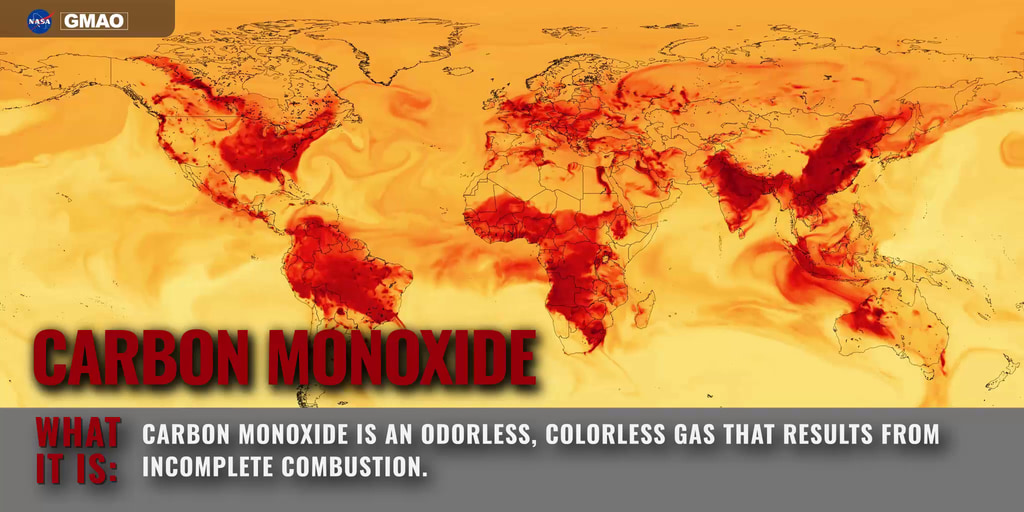Carbon Monoxide (CO)
Near surface concentration of carbon monoxide (CO) estimated by NASA’s GEOS-CF model.
Predictions of air pollution are created using complex models that combine information about weather and the emissions, transformation, and transport of chemical species and particles. The Goddard Earth Observing System Composition Forecasting (GEOS-CF) system is a research model maintained by NASA’s Global Modeling and Assimilation Office to help scientists understand the causes and impact of air pollution. It is one of the highest resolution and most detailed models of its kind in the world, made possible through ongoing collaborations between NASA and university scientists. GEOS-CF tracks the concentrations of hundreds of gas phase chemical species and dozens of types of particles characterized by their composition and size. It is used by a wide variety of stakeholders around the world to develop new methods for improving local predictions, understanding the impact of pollution on human health, and improving the quality of NASA satellite datasets.
Carbon Monoxide, a molecule comprised of one carbon and one oxygen atom, is a product of incomplete combustion. It is emitted from a variety of human activities involving vehicles, industry, and residential wood burning and from wildfires. In extremely high concentrations, carbon monoxide can interfere with the ability of blood to carry oxygen, causing fatigue, headaches, dizziness, and confusion. In many parts of the U.S. and Europe, levels have decreased substantially in recent decades due to improvements in vehicle technology and regulations aimed at limiting emissions. However, increases in the frequency, severity, and duration of wildfires are increasing emissions of carbon monoxide. Because of its relatively long lifetime in the atmosphere (about 2 months), it can be transported over long distances by weather systems, illustrating the global reach of air pollution and challenges that cannot be addressed through local action alone.
Credits
Please give credit for this item to:
NASA’s Global Modeling and Assimilation Office
-
Visualizer
- Joseph V. Ardizzone (NASA/GSFC)
Release date
This page was originally published on Tuesday, September 26, 2023.
This page was last updated on Friday, April 25, 2025 at 11:01 PM EDT.
Series
This page can be found in the following series:Related papers
Keller, C. A., Knowland, K. E., Duncan, B. N., Liu, J., Anderson, D. C., Das, S., Lucchesi, R. A., Lundgren, E. W., Nicely, J. M., Nielsen, E., Ott, L. E., Saunders, E., Strode, S. A., Wales, P. A., Jacob. D. J., and Pawson, S. (2021). Description of the NASA GEOS composition forecast modeling system GEOS-CF v1.0. Journal of Advances in Modeling Earth Systems, 13, e2020MS002413. https://doi.org/10.1029/2020MS002413
Datasets used
-
GEOS-CF
ID: 1197Knowland, K.E., C.A. Keller, and R. Lucchesi, 2022: File Specification for GEOS-CF Products. GMAO Office Note No. 17 (Version 1.3), 54 pp, available from https://gmao.gsfc.nasa.gov/pubs/docs/Knowland1446.pdf
This dataset can be found at: https://gmao.gsfc.nasa.gov/weather_prediction/GEOS-CF/data_access/
See all pages that use this dataset
Note: While we identify the data sets used on this page, we do not store any further details, nor the data sets themselves on our site.







